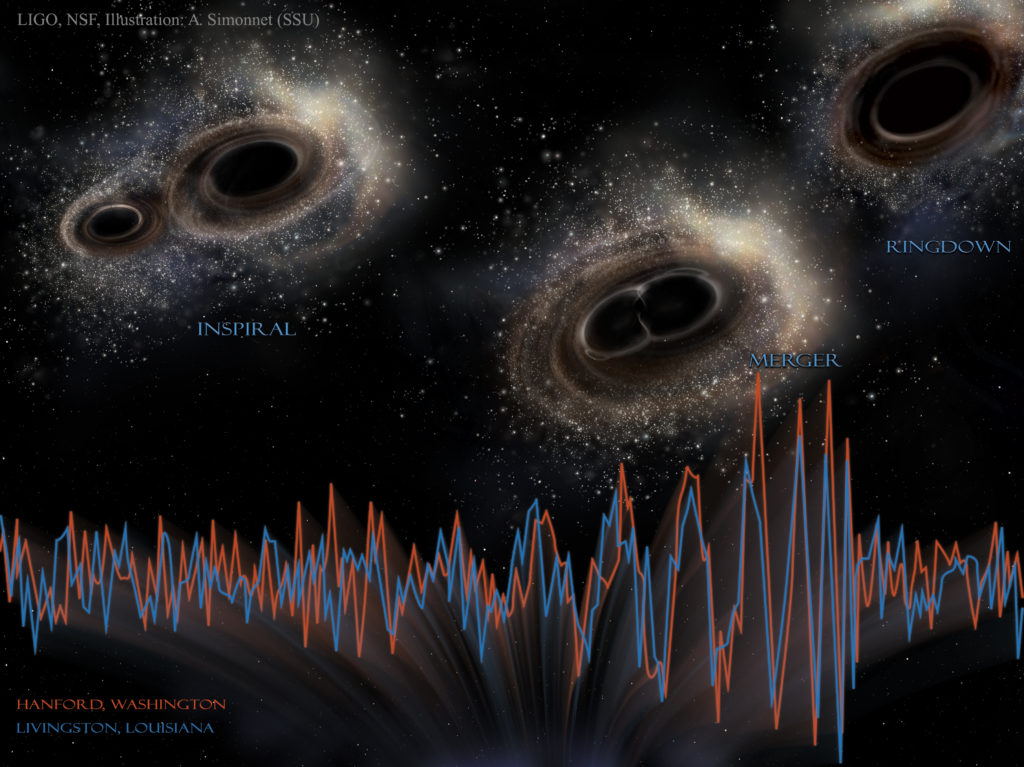In the vast cosmic arena, where the cataclysmic deaths of massive stars—supernovae—have traditionally served as harbingers of gravitational waves, an unsettling silence permeates. The phenomenon of exploding stars, once anticipated to resonate through the fabric of spacetime, seems inexplicably devoid of the subtle quivers of gravitational waves. This dichotomy raises intriguing questions: What does it imply about the nature of these stellar demises? Are we witnessing a cosmic event shrouded in silence or merely a misunderstanding of the signals that envelop us?
Exploring the enigma of silent explosions in the ferocious theatre of the universe necessitates an understanding of the intricacies of supernovae and gravitational waves themselves. Supernovae, those brilliant fireworks of celestial destruction, arise when a star exhausts its nuclear fuel, leading to a catastrophic collapse followed by a rapid explosion. In theory, these events should generate gravitational waves—ripples in spacetime produced by the acceleration of massive bodies, as elucidated by Einstein’s theory of general relativity.
The gravitational waves that emanate from such cosmic phenomena are akin to whispers in the void, carrying with them tales of immense energy release and structural transformation of the universe. However, the absence of these signatures from recent stellar explosions attenuates the allure of our cosmic narrative. It compels physicists and astronomers alike to interrogate the prevailing hypotheses surrounding stellar death and the nature of gravitational wave production.
One meritocratic methodology to examine this silence juxtaposes the expected mechanics of core-collapse supernovae against the observed events. The progenitor stars—massive entities that eventually succumb to their own gravitational embrace—are subject to intricate mechanics involving rapid rotation and magnetic fields prior to their demise. Such factors significantly influence the progenitor’s geometry and the resulting explosion’s morphology. It leads one to ponder: Are gravitational wave expectations overly simplified, perhaps predicated on the assumption of symmetrical explosions?
Consider, for instance, the concept of asymmetry. When a core collapses, if the resultant explosion possesses an irregular distribution of mass and energy—characteristics that quantum mechanics often govern—gravitational waves may spiral outward in a manner that evades detection by current observatories. The absence of detectable waves could thus be reconciled with a deeper understanding of asymmetrical blasts, where the loudest cacophony is lost in the recesses of space.
Moreover, the instruments we utilize to detect gravitational waves—pioneering observatories such as LIGO—are exquisitely sensitive but can also be remarkably demanding. Their capacity to capture the subtle nuances of gravitational fluctuations depends on various factors, including distance, orientation, and the frequency of the waves. The universe is an unexplored expanse replete with mysteries, and many of its secrets remain elusive beyond the capabilities of our instrumentation.
The absence of gravitational wave signals from supernovae invites contemplation not merely on detection mechanisms but also on the potential for novel synthetic phenomena. Transitioning from text to theory, one can observe that the interplay between matter and energy at the moment of detonation may engender unique pathways of gravitational emission—emerging from a tensor network bustling in multidimensional configurations. Ultimately, the prospect that other exotic processes, perhaps yet unnamed, could be at play broadens the horizon of inquiry.
As we probe deeper into the cosmic abyss, it becomes imperative to consider alternative models of stellar death that do not conform to our rigid expectations. The notion of the “silent supernova”—the hypothetical explosion devoid of gravitational waves—may insist on an evolution of our theoretical paradigms, urging the scientific community to broaden its perspectives. Exciting possibilities arise when theories intersect: could quark-novae or hypernovae, with their more substantial energy releases and distinct mechanisms, influence gravitational wave generation? Exploring these options may render richer narratives within the cosmic tapestry.
Furthermore, the juxtaposition of silence in the gravitational wave domain against the backdrop of electromagnetic radiation serves to reinforce the complexity of supernovae. While gravitational waves represent a delicate whisper, electromagnetic radiation—visible light, x-rays, and gamma rays—unleashes a cacophony that speaks volumes. Consider the bright flash of a supernova, its chromatic brilliance illuminating the night sky for a brief moment. This comparison between the visual and the gravitational accentuates the multifaceted nature of cosmic phenomena and encourages a more nuanced exploration of astrophysics.
Ultimately, the phenomena surrounding silent supernovae echo wider existential themes pertaining to knowledge and understanding in the realm of physics. Not every explosion in the vast dark expanse leads to resonating waves—a reflection of nature’s multifarious mechanisms and the limitations inherent in our observational techniques. Embracing silence may be crucial, for it allows scientists to explore previously uncharted territories and, in doing so, pose more profound questions about the universe’s workings.
In this epoch of discovery, as gravitational wave astronomy continues to evolve, it is paramount to recognize that silence, in its enigmatic form, does not denote a lack of discovery but rather the potential for infinite exploration. The narrative of exploding stars, fortified by their silent gravitas, beckons a more intricate understanding. The void we perceive may not indeed be a vacuum but a realm filled with whispers of galaxies past—a reminder that the cosmos is a symphony of sighs, pauses, and the unknowable.










